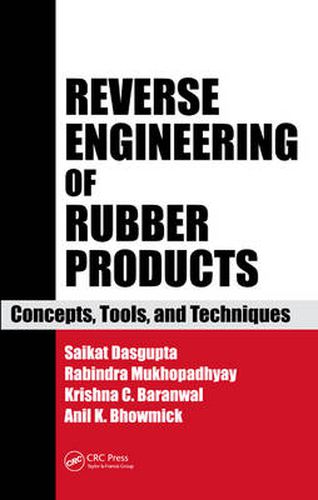Readings Newsletter
Become a Readings Member to make your shopping experience even easier.
Sign in or sign up for free!
You’re not far away from qualifying for FREE standard shipping within Australia
You’ve qualified for FREE standard shipping within Australia
The cart is loading…






Reverse engineering is widely practiced in the rubber industry. Companies routinely analyze competitors’ products to gather information about specifications or compositions. In a competitive market, introducing new products with better features and at a faster pace is critical for any manufacturer. Reverse Engineering of Rubber Products: Concepts, Tools, and Techniques explains the principles and science behind rubber formulation development by reverse engineering methods. The book describes the tools and analytical techniques used to discover which materials and processes were used to produce a particular vulcanized rubber compound from a combination of raw rubber, chemicals, and pigments.
A Compendium of Chemical, Analytical, and Physical Test Methods
Organized into five chapters, the book first reviews the construction of compounding ingredients and formulations, from elastomers, fillers, and protective agents to vulcanizing chemicals and processing aids. It then discusses chemical and analytical methods, including infrared spectroscopy, thermal analysis, chromatography, and microscopy. It also examines physical test methods for visco-elastic behavior, heat aging, hardness, and other features. A chapter presents important reverse engineering concepts. In addition, the book includes a wide variety of case studies of formula reconstruction, covering large products such as tires and belts as well as smaller products like seals and hoses.
Get Practical Insights on Reverse Engineering from the Book’s Case Studies
Combining scientific principles and practical advice, this book brings together helpful insights on reverse engineering in the rubber industry. It is an invaluable reference for scientists, engineers, and researchers who want to produce comparative benchmark information, discover formulations used throughout the industry, improve product performance, and shorten the product development cycle.
$9.00 standard shipping within Australia
FREE standard shipping within Australia for orders over $100.00
Express & International shipping calculated at checkout
Reverse engineering is widely practiced in the rubber industry. Companies routinely analyze competitors’ products to gather information about specifications or compositions. In a competitive market, introducing new products with better features and at a faster pace is critical for any manufacturer. Reverse Engineering of Rubber Products: Concepts, Tools, and Techniques explains the principles and science behind rubber formulation development by reverse engineering methods. The book describes the tools and analytical techniques used to discover which materials and processes were used to produce a particular vulcanized rubber compound from a combination of raw rubber, chemicals, and pigments.
A Compendium of Chemical, Analytical, and Physical Test Methods
Organized into five chapters, the book first reviews the construction of compounding ingredients and formulations, from elastomers, fillers, and protective agents to vulcanizing chemicals and processing aids. It then discusses chemical and analytical methods, including infrared spectroscopy, thermal analysis, chromatography, and microscopy. It also examines physical test methods for visco-elastic behavior, heat aging, hardness, and other features. A chapter presents important reverse engineering concepts. In addition, the book includes a wide variety of case studies of formula reconstruction, covering large products such as tires and belts as well as smaller products like seals and hoses.
Get Practical Insights on Reverse Engineering from the Book’s Case Studies
Combining scientific principles and practical advice, this book brings together helpful insights on reverse engineering in the rubber industry. It is an invaluable reference for scientists, engineers, and researchers who want to produce comparative benchmark information, discover formulations used throughout the industry, improve product performance, and shorten the product development cycle.